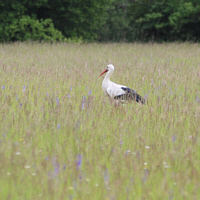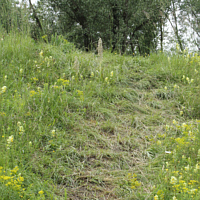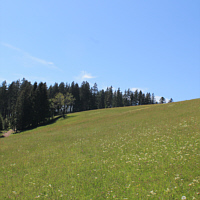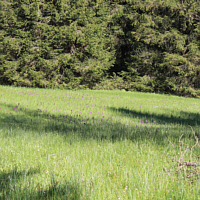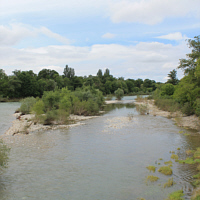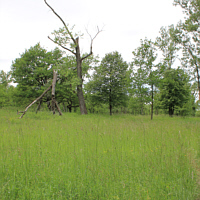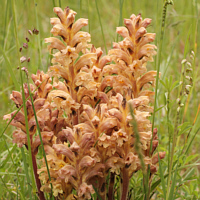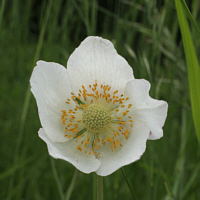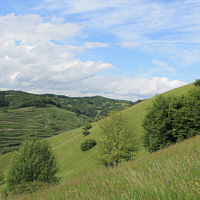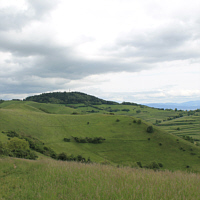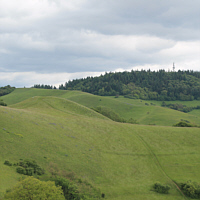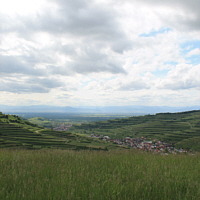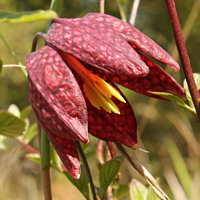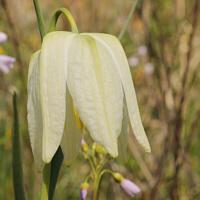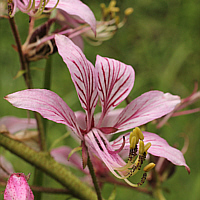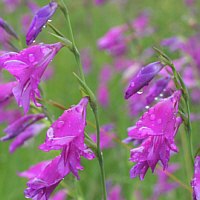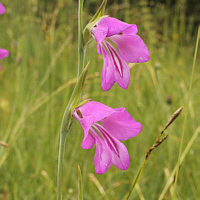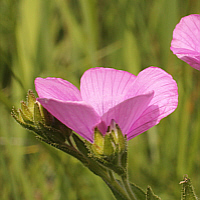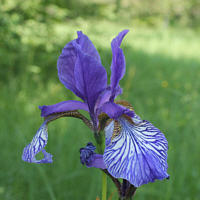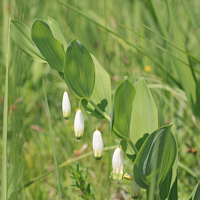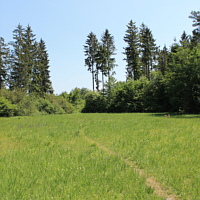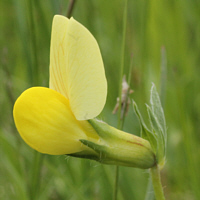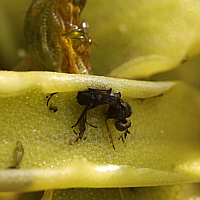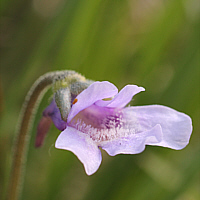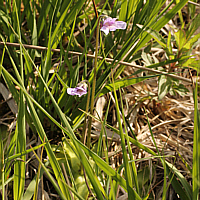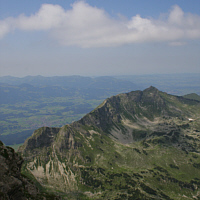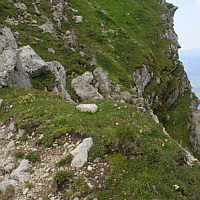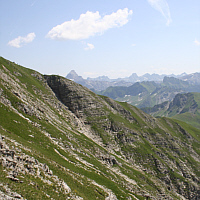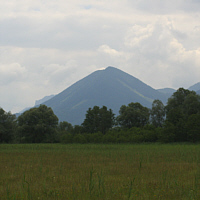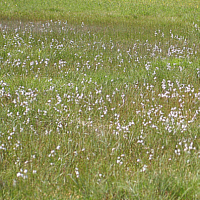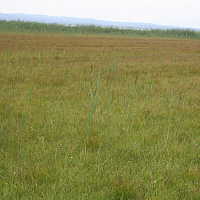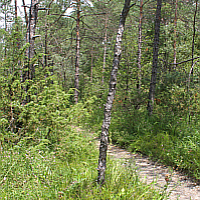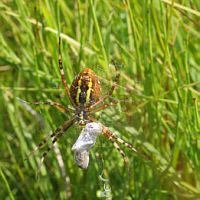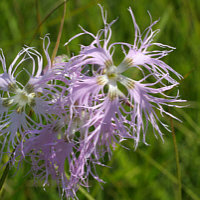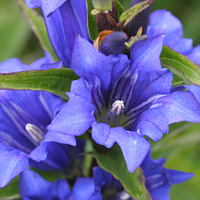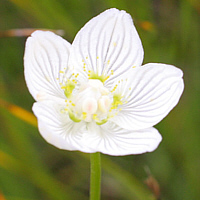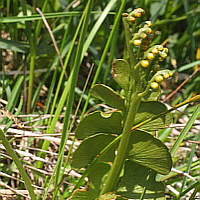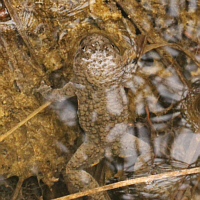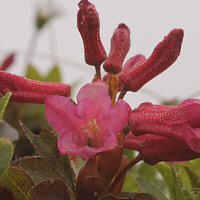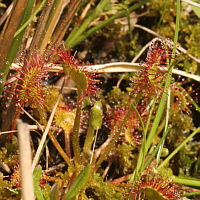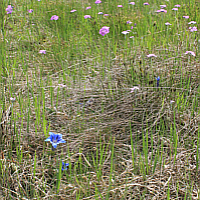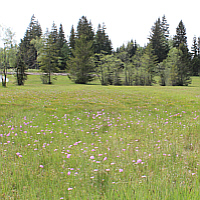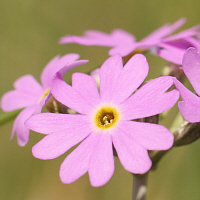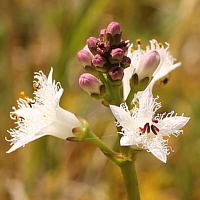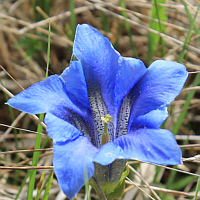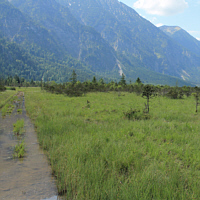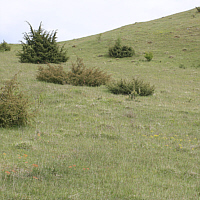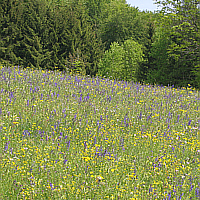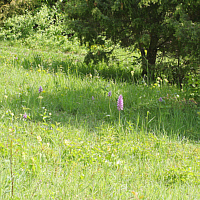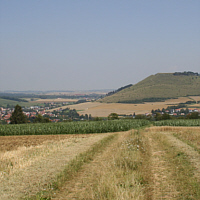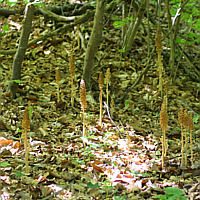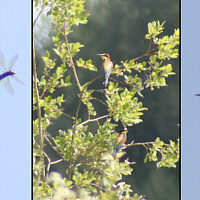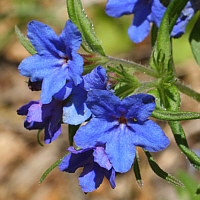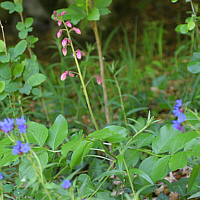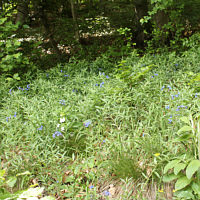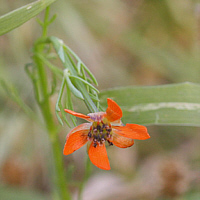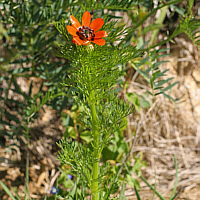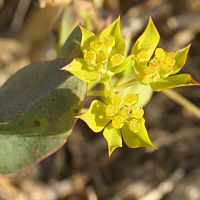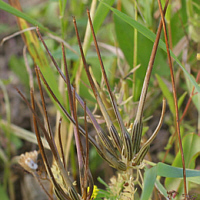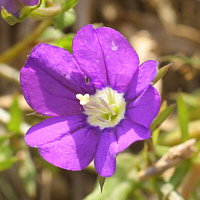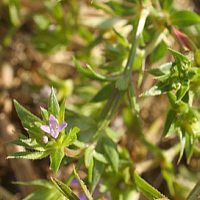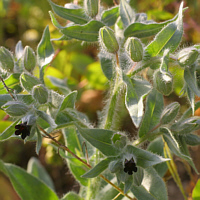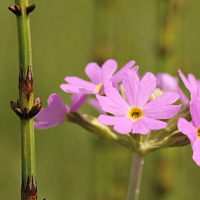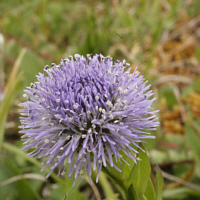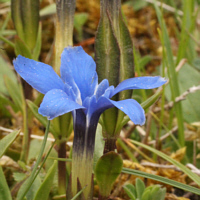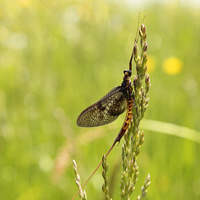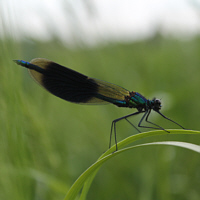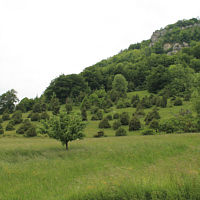Germany
Overview
Of circa 700 native orchid species in Europe are circa 70 species to be found in Germany too. Several species are relative widespreaded, uncomplicated and can partly to be found along roadsides, in cemeteries, parks and gardens. These inconspicuous species are for botanical laymen almost not to recognize as orchid. However, the overwhelming majority of native orchids are rare to very rare and partly threatened with extinction. Of several species are only a few dozen locations known, which have often a small number of individuals. Especially for most attractive species this is the case.
Only a few species are more or less equal widespreaded in Germany, most species are only to be found massed in one or a few German regions. I present you on this site some, concerning native orchids, very interesting regions, which host numerous species.
Kaiserstuhl and along the Upper Rhine

The Kaiserstuhl as an old and extinct volcano is a very special valuable region. Many xerothermic plants grow on it and in its surrounding along the Rhine Graben, which is favored by warmth. You can often find dry grasslands with a remarkable flora, such as on the Badberg. Here are numerous rare orchid species to be found. Most species have a Mediterranean distribution focus and often reach Germany only in its southwestern regions. The Monkey Orchid (Orchis simia) as well as the Violet Limodore (Limodorum abortivum), a very rare species, of which it should be only 500 plants in Germany, according to estimates, are almost only to be found along the Rhine. Other species as the Man Orchid (Aceras anthropophorum) and the Small Spider Orchid (Ophrys araneola) are also to be found in other warm German regions. Especially the Mediterranean Pyramidal Orchid (Anacamptis pyramidalis) and the Lizard Orchid (Himantoglossum hircinum) show an increasing distribution to the East the last years to decades. I do not want to state whether this is an indication for the controversial discussed global warming. But remarkable is their increasing distribution contrary to the general trend in native orchids.
Lech heaths
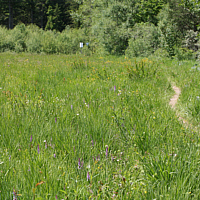
The heaths along the Lech are very interesting biotops, so that I detailed elaborate on this special plant community on another site. The Lech heaths are mainly grown by calcareous and dry grasslands, so that the corresponding orchid species in the Lech heaths are to be found. Mostly the heaths consist also areas, which vary from humid to dry or which are always humid. These areas are often tesselated side by side. Altogether the Lech heaths show an exceptionally rich flora and are habitat of numerous very rare species. This concerns incidentally not only the plant family of orchids. In addition to typical inhabitants of calcareous grasslands as Gymnadenia conopsea, Herminium monorchis, Listera ovata, Ophrys apifera, Ophrys fuciflora, Ophrys insectifera, Ophrys sphegodes, Orchis militaris, Orchis morio, Platanthera bifolia and Spiranthes spiralis, is in the more humid parts also to be found Epipactis palustris. A speciality is the Bug Orchid (Orchis coriophora), which is in Bavaria only to be found at circa 30 locations. Many of these locations are heaths in the range of the Lech valley. But unfortunately these are often relative individual-poor locations, so that the Bug Orchid is acute threatened with extinction in Germany.
Bogs in the Bavarian alpine foothills & Alps
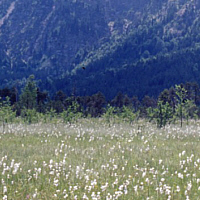
The bogs in South Germany host not only an interesting orchid plenty, but also an otherwise very interesting flora. So they are also refuge of several carnivorous plants. In lime-rich fens is especially the Common Butterwort (Pinguicula vulgaris) to be found, partly also aquatic living bladderworts (Utricularia australia, Utricularia vulgaris), directly near the Alps also the Alpine Butterwort (Pinguicula alpina). The three German Sundew species, namely Drosera rotundifolia, Drosera intermedia and Drosera anglica live rather in transitional bogs and raised bogs, however. Here are rarely also further bladderwort species, as Utricularia intermedia, to be found. Orchids are mainly to be found in the more frequent fens. There are humidity-loving Dactylorhizae to be found as Dactylorhiza incarnata, Dactylorhiza majalis, Dactylorhiza ochroleuca and Dactylorhiza traunsteineri, partly also Dactylorhiza fuchsii. Similarly they are habitat of the Marsh Helleborine (Epipactis palustris), the Fragrant Orchids (especially Gymnadenia conopsea var. densiflora and Gymnadenia odoratissima), of the Single-leaved Bog Orchid (Malaxis monophyllos) and of the Musk Orchid (Herminium monorchis). Partly are in fens also to be found Twayblades (Listera cordata and Listera ovata) and the Military Orchid (Orchis militaris). Some inhabitants of fens are also to be found in transitional bog areas, however, classic orchids are here primarily the Narrow-leaved Fen Orchid (Liparis loeselii), the Marsh Orchid (Orchis palustris) and the Summer Lady’s-Tresses (Spiranthes aestivalis). The only typical inhabitant of raised bogs is in South Germany the Bog Orchid (Hammarbya paludosa), which grows in peat moss (Sphagnum spec.), often with Sundew species (Drosera spec.) socialized.
Swabian Alb
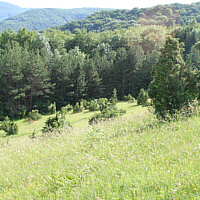
The Swabian Alb shows two different types of biotops. On the one hand the juniper heaths, mostly calcareous grasslands with the Common Juniper (Juniperus communis) as characteristic plant, on the other hand forests, which grow on a calcareous underground. Mainly these are beech forests, in addition are also to be found mixed and pure spruce forests, as well as pine forests mostly on the edge of juniper heaths. You can find further information about juniper heaths on another site, so that I limit myself to typical orchids. Juniper heaths are mostly species-rich habitats. Very often are to be found the Common Spotted Orchid (Dactylorhiza fuchsii), the Common Fragrant Orchid (Gymnadenia conopsea), the Common Twayblade (Listera ovata), the Fly Orchid (Ophrys insectifera), the Early Purple Orchid (Orchis mascula), the Military Orchid (Orchis militaris) and the Lesser Butterfly Orchid (Platanthera bifolia). More rare are the Pyramidal Orchid (Anacamptis pyramidalis), the Short-spurred Fragrant Orchid (Gymnadenia odoratissima), the Bee Orchid (Ophrys apifera), the Early Spider Orchid (Ophrys sphegodes), the Green-veined Orchid (Orchis morio) and the Pale-flowered Orchid (Orchis pallens). Only on a few locations you can find the Man Orchid (Aceras anthropophorum), the Frog Orchid (Coeloglossum viride), the Musk Orchid (Herminium monorchis), the Little Spider Orchid (Ophrys araneola) and the Autumn Lady’s Dresses (Spiranthes spiralis).
Common species of beech forests are the different Helleborine species (Cephalanthera) and <(Epipactis), the strange rubber-like Bird’s-nest Orchid (Neottia nidus-avis) and the Greater Butterfly Orchid (Platanthera chlorantha). More rarely are to be found the splendid European Lady’s Slipper (Cypripedium calceolus) and the Lady Orchid (Orchis purpurea) in sparse deciduous forests, the Creeping Lady’s-Dresses (Goodyera repens) mostly in pine forests and the Coral-root Orchid (Corallorhiza trifida) in shady spruce forests. A rarity and mostly only as individual appearing is the Ghost Orchid (Epipogium aphyllum).

